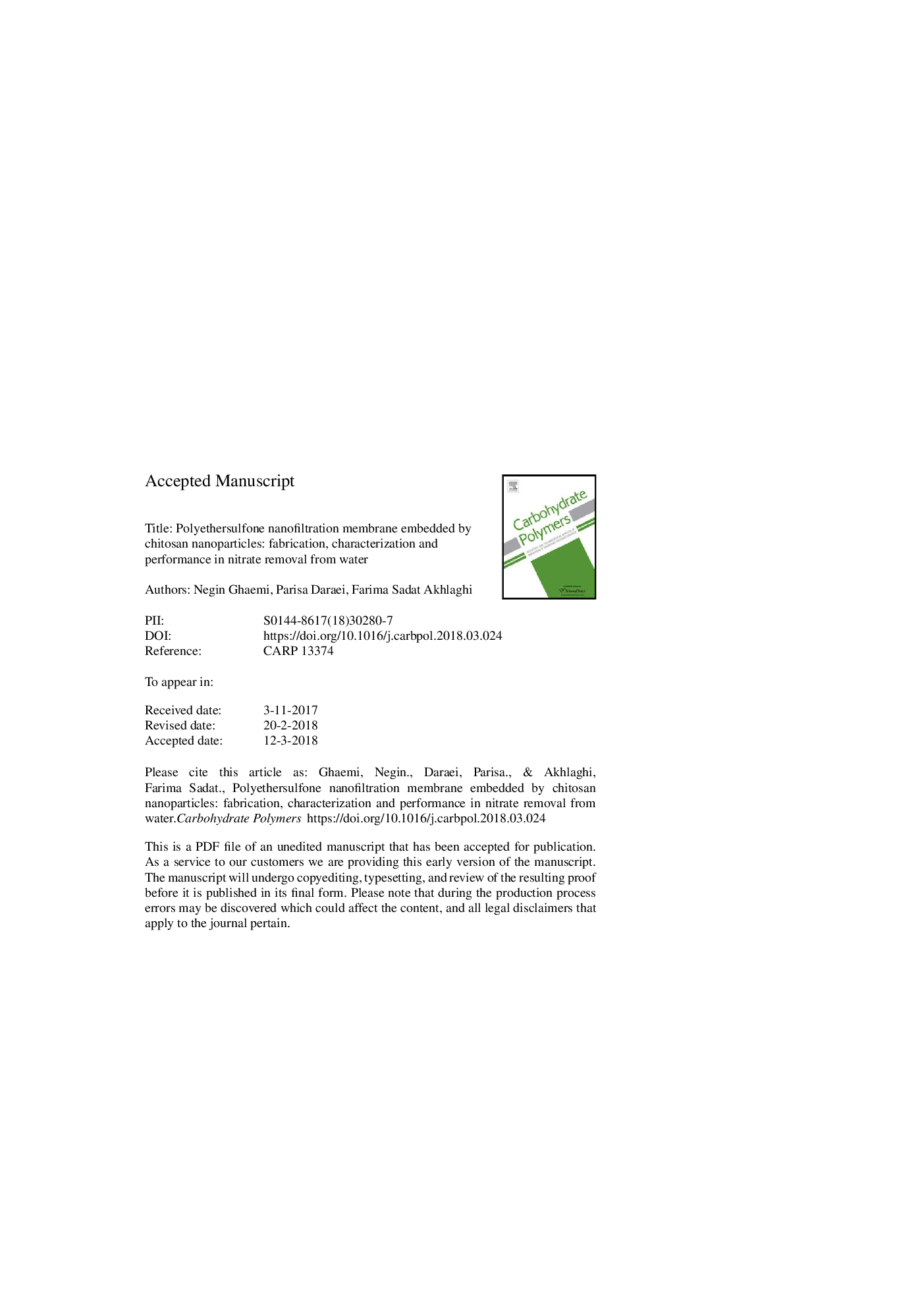| Article ID | Journal | Published Year | Pages | File Type |
|---|---|---|---|---|
| 7782766 | Carbohydrate Polymers | 2018 | 38 Pages |
Abstract
In this research, chitosan nanobiopolymers (CS-NPs) were synthesized using tripoly phosphate and transferred into the organic solvent via solvent exchange method. Different amounts of chitosan nanopolymers were embedded into the polyethersulfone (PES) membrane prepared by phase inversion precipitation method. The membranes were employed for nitrate removal from water under various solution pHs (4.5, 7.0 and 9.0). Scanning electron microscopy, atomic force microscopy, porosity, water contact angle and pure water flux measurements were employed to characterize the fabricated membranes. Addition of chitosan nanoparticles into the membrane matrix increased the water permeability from 13 for pristine membrane to 22â¯kg/m2â¯h for modified membrane with 0.2â¯wt.% nanopolymer. However, the application of CS-NPs more than 0.4â¯wt.% led to membranes with a compact matrix and dense structure, thereby reducing water permeation even lower than PES. At all tested solution pHs, nitrate removal efficiency was significantly improved in comparison with pristine PES at as a result of adsorptive properties of chitosan biopolymer. The complete nitrate removal (100%) was achieved at acidic pH due to protonation of amine groups of CS-NPs creating positive charge on the membrane surface.
Related Topics
Physical Sciences and Engineering
Chemistry
Organic Chemistry
Authors
Negin Ghaemi, Parisa Daraei, Farima Sadat Akhlaghi,
